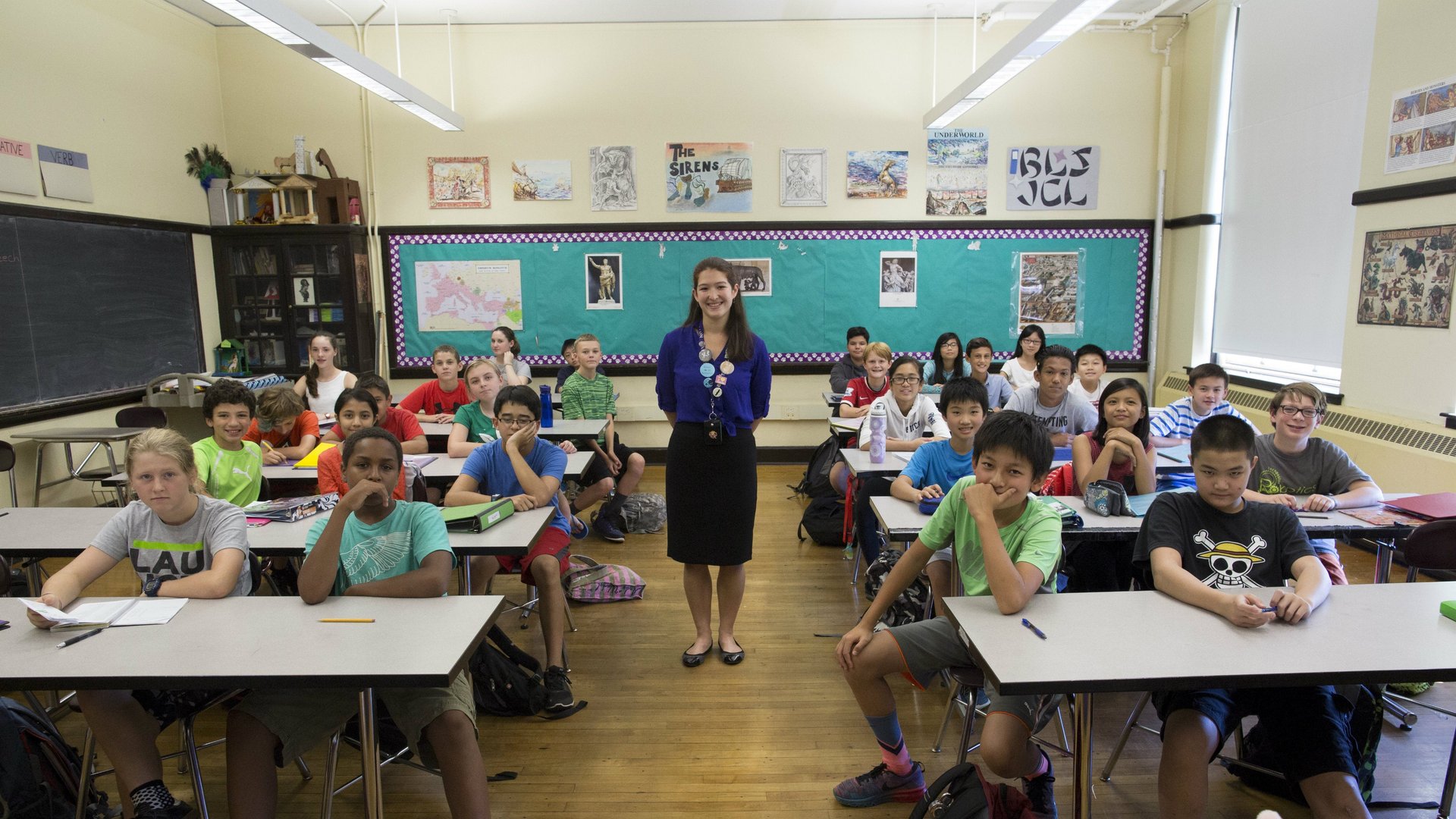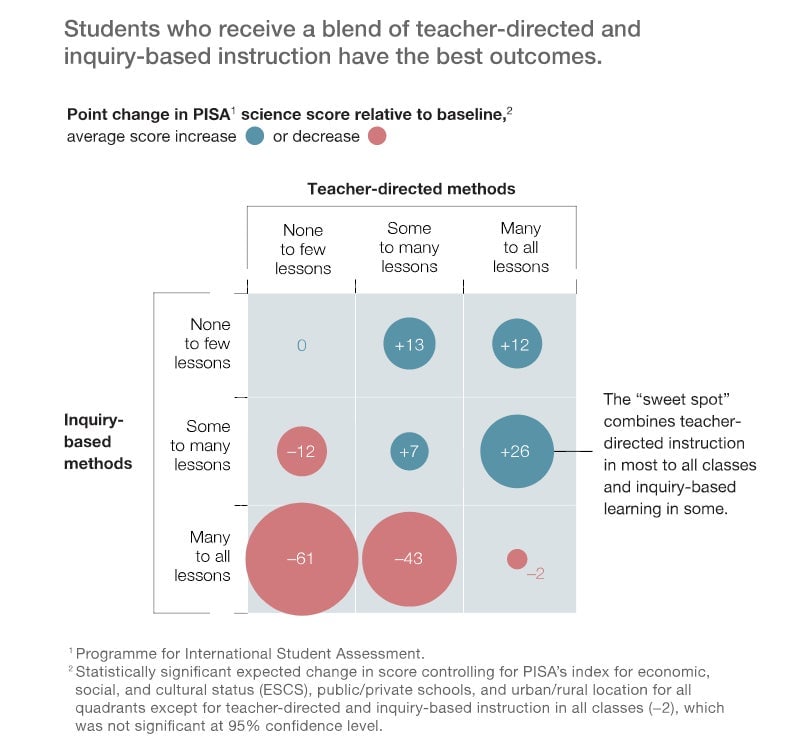McKinsey used machine learning to discover the best way to teach science
There is a long-standing, red-hot debate in educational circles about the most effective way to teach kids. Some favor more traditional teacher-directed methods, with the teacher presenting materials and responding to questions about it. Others advocate for inquiry-based learning—where students drive their own learning (pdf) through discovery and exploration, working with peers and developing their own ideas—arguing it results in deeper, and more meaningful learning.


There is a long-standing, red-hot debate in educational circles about the most effective way to teach kids. Some favor more traditional teacher-directed methods, with the teacher presenting materials and responding to questions about it. Others advocate for inquiry-based learning—where students drive their own learning (pdf) through discovery and exploration, working with peers and developing their own ideas—arguing it results in deeper, and more meaningful learning.
The two are sometimes pitted against each other as “sage on a stage” (teacher directed) vs. “guide on the side” (student-led, or inquiry based). Both cite ample evidence to prove the superiority of their method (see here for teacher-directed, and here for inquiry-based).
McKinsey applied machine learning to the world’s largest student database to try and come up with a more scientific answer. The bottom line: A mixture of the two methods is best, but between the two, teacher-directed came out stronger. In all five regions of the world, scores were generally higher when teachers took the lead. “The more frequently teacher-directed happens, the better students do,” said Marc Krawitz, an associate partner at McKinsey. Conversely, “Student outcomes tend to decline with inquiry-based, as it is increased in isolation.”
The data come from the Organisation for Economic Co-operation and Development, which tests 15-year-olds around the world on mathematics, reading, and science every three years (the Programme for International Student Assessment, or PISA). McKinsey used the 2015 test, which focused on science and covered more than half a million students across 72 countries.

The greatest learning gains—+26 points on the PISA test—happened when “many-to-all” of the lessons were teacher-directed and “some to many” were inquiry-based. In other words, a healthy combination was best. But the bottom left quadrant shows that inquiry-based without a lot of teacher direction is definitively not helpful, at least as far as the PISA test goes, whereas students in all-teacher-led systems still scored moderately higher than the baseline.
The authors offers two potential explanations for why teacher-directed produces better scores. First, “students cannot progress to inquiry-based methods without a strong foundation of knowledge, gained through teacher-directed learning,” the report says. Second, inquiry-based teaching is harder to do, and teachers who try it without adequate training and support will struggle.
McKinsey’s report won’t settle the debate. A PISA score is not a perfect measure of a good education. The test is only administered in 72 countries, and plenty of people argue PISA itself is flawed.
And there’s an important caveat: The report notes that inquiry-based teaching increases students’ joy in science significantly more than teacher-directed learning does. (Teacher-directed is also positively correlated with joy, though the impact is less.) Inquiry-based also helps convince students that science is worthwhile for their future careers. Since passion often results in perseverance, which can lead to better student (and life) outcomes, joy matters. Also, joy just matters.
“Inquiry-based practices have a stronger positive affect on students’ joy in science and their beliefs that doing well in school will help them have a brighter future,” said Mona Mourshed, lead author of the report and global head of the education practice at McKinsey. “That’s why, across all regions, blending teacher-directed instruction with inquiry-based learning produces the greatest overall benefit.”
Good teachers of course draw on multiple methods, depending on the subject and the learner. And good teachers also know that most things in life—from the value of standardized tests, to ideological debates about teaching—are not black and white.